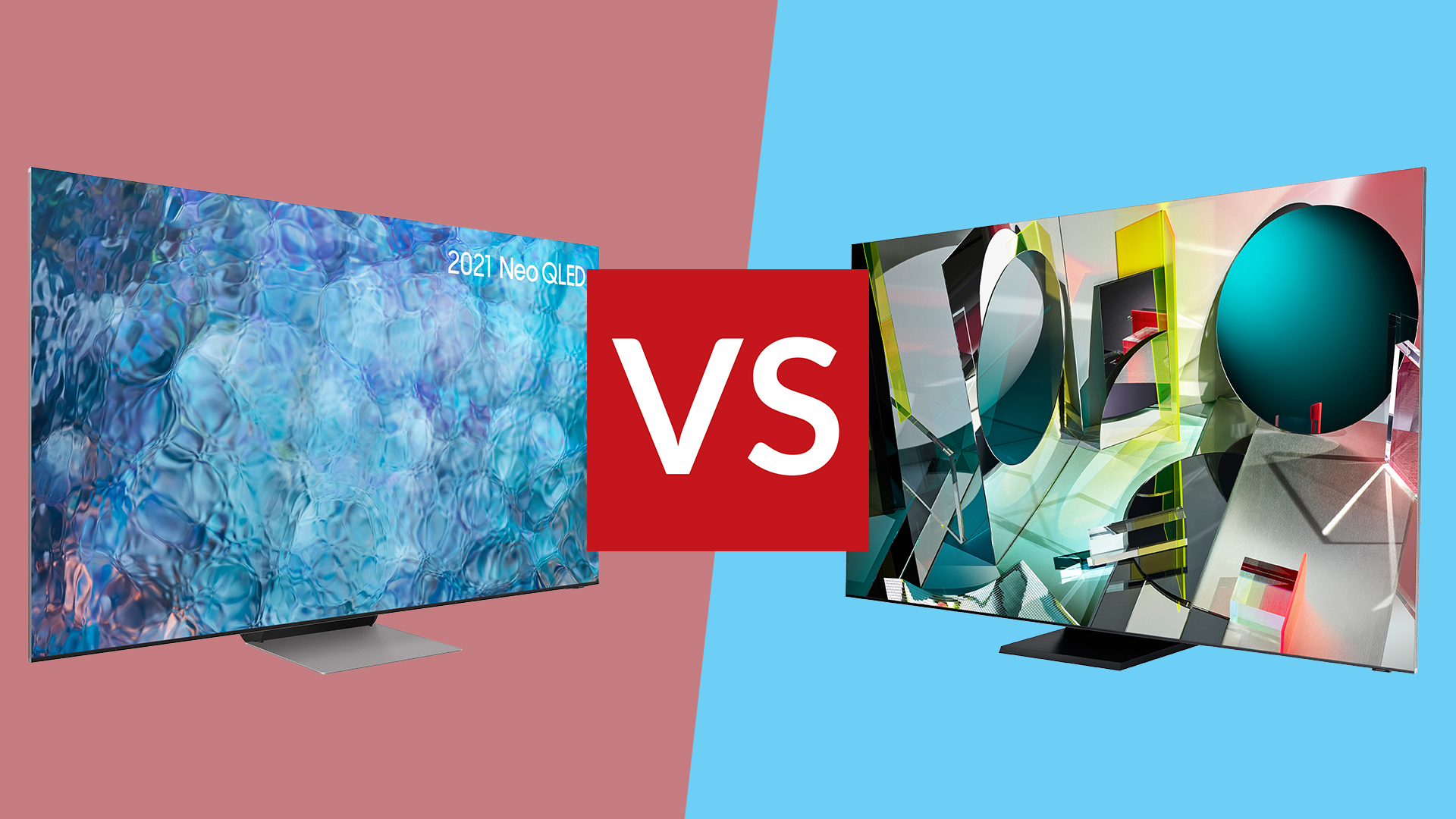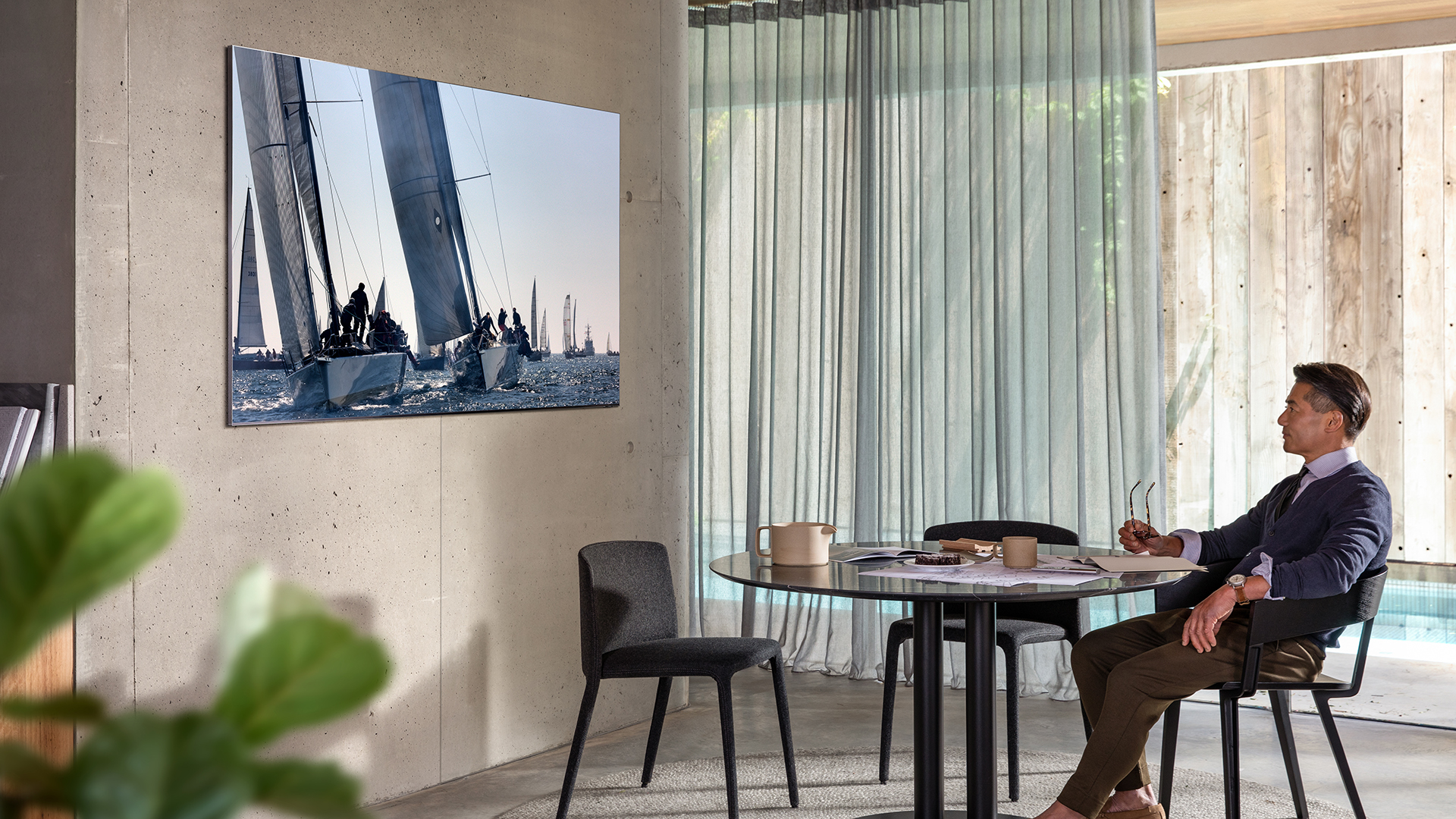Samsung QN900A vs Samsung Q950TS: what changed in Samsung's 8K flagship TVs?
Samsung's QN900A 8K TV is its flagship 2021 model, but how much of an improvement is it over the Q950TS?


If you're looking for the most astounding TV pictures you can get, Samsung's 8K TVs should top of your list. The Samsung QN900A was its most advanced LCD TV ever (until it was replaced by the QN900B of course). The Samsung Q950TS was the equivalent model from the previous generation.
Both still offer fantastic quality, and almost single-handedly justify the idea that the best 8K TVs are worth buying even when there's a lack of 8K content. The huge resolution makes them among the best 80+ inch TVs, but they're equally spectacular at smaller sizes.
The Samsung Q950TS topped our list of the best TVs of all kinds when it first launched, and the QN900A is absolutely aiming to do the same, partly thanks to having a next-generation panel powering it. Spoiler alert: it achieved that, before being knocked off by the QN900B.
If you're thinking of buying an 8K TV now and are looking for an older model bargain then you may be wondering what the differences are between these two sets. So let's take a look at how they compare.

The Neo QLED Samsung QN900A – it's a looker.
Samsung QN900A vs Samsung Q950TS: Price & release date
The Samsung QN900A released officially in April/May 2021. The Samsung Q950TS launched a year earlier, in spring 2020.
Being flagships, both are right up at the premium end of the TV spectrum, but there's still a big difference between them… and, oddly, that difference goes in both directions, as the 950TS model is harder to source now, so the newer and better 900A is likely to appear at better prices (see the real-time widget embedded below).

Samsung QN900A vs Samsung Q950TS: Display
The Samsung QN900A uses Samsung's Neo QLED image technology, which mixes the QLED technology it's used for years with new mini-LED lighting. Mini-LED lighting means, literally, that the LEDs in the backlight are smaller (40 times, according to Samsung), which means its possible to have more of them in a thinner layer.
Get all the latest news, reviews, deals and buying guides on gorgeous tech, home and active products from the T3 experts
The thinner layer keeps the screen svelte, but having more of them is great because it means you can potentially have more dimming zones to control the contrast. Dimming zones are when the TV can literally dim the backlight in specific areas so that dark areas look truly dark, rather than grey (because they still have the backlight attempting to shine through the black pixels).
Having more dimming zones means the zones themselves are smaller, which in turn means you get more precision to this dimming effect, and less 'bloom' (which is when the backlight spills from lighter areas of the screen into dark areas, making blacks look uneven).
The exact number of dimming zones can vary by size, but it looks like larger sizes of the QN900A have around 2,000 dimming zones, whereas on the Q950TS, you have 480. That's a big difference to what kind of precision is on offer for fine lighting control, and it means that the QN900A is remarkably close to what the best OLED TVs can achieve.
The Samsung Q950TS is truly impressive for contrast control when compared to any other LCD TV – but the new technology takes it up a notch for the real image quality aficionados (and that's very much who these TVs are for).
However, good news for the Samsung Q950TS is that both TVs offer the same brightness levels. They can both theoretically peak at 4000 nits, which is COLOSSAL and broadly unnecessary. However, that's only in certain modes – realistically, you're looking at more like HDR peak brightness of 2000 nits, which is bright enough to really dazzle, and can make scenes look stunningly realistic when combined with the resolution.
So, let's talk about the 8K resolution. Both sets include Samsung's advanced AI upscaling technology, though the QN900A's is a naturally a bit more advanced than what you get on the Q950TS. But both are capable to taking high-quality 4K video and making it look sharper and better than you've ever seen, even if it doesn't look quite as good as 'real' 8K video.
Right now, the main idea of an 8K TV is that it can be the best 4K TV you've ever seen, and both of these sets deliver on that promise.

Both of these TVs are astoundingly thin – and unlike OLED TVs, the whole body is pencil-thin, because the circuitry is elsewhere.
Samsung QN900A vs Samsung Q950TS: Design & features
Both TVs stand at just 0.6 inches/15mm thick all the way across, and feature near-identical Infinity screens, which means the bezel on three sides is so thin it's effectively invisible, with a slightly thicker chin on the bottom (but only by millimetres). They both use a single central foot as a stand, or can be wall-mounted. They look effectively the same – extremely sleek, extremely futuristic.
Both TVs use Samsung's One Connect box for connections, which is a separate unit away from the main body (helping to keep the TV so thin). It contains all the processing and ports, and connects to the screen using just a single thin cable. This means you can hide the One Connect box away, keeping your TV stand neat and tidy, or making wall mounting even easier.
The Samsung Q950TS has two HDMI 2.1 ports, and two HDMI 2.0 ports. The QN900A has four HDMI 2.1 ports, so is slightly strong when it comes to future-proofing, but we wouldn't consider that a dealbreaker unless you are an extremely hard core gamer.
Speaker of gaming, both screens have extremely low lag times, but only the QN900A includes Samsung's new Game Bar, which is a great feature to help you customise exactly what the screen is doing while you play and displays important connection information.
Both screens support HDR10+, HLG and HDR10 forms of HDR, though sadly neither supports Dolby Vision. (No Samsung TVs do.)
They don't support Dolby Atmos audio either, but they can pass it through to soundbars or AV receivers.
Samsung's Tizen smart TV system provides the software for both sets, and this is great for comprehensive streaming app support, and for usability – it's clear and understandable.
The QN900A comes with a new solar-powered remote that shouldn't need batteries, too.

Both these TVs have speakers around the edges, to create big, directional 3D sound.
Samsung QN900A vs Samsung Q950TS: Speakers
Both these TVs feature Samsung's Object Tracking Sound+ system, which basically means two things: 1) the screen has speakers around all of its edges, so that sound can be given lots of direction; 2) the built-in AI processing will analyse the image to make sure that these speakers actually add the correct directionality, no matter whether what you're watching is in Dolby surround or not.
It's an impressive system, and you can really hear the direction change of a car screaming across the screen, for example. It's also among the best-sounding systems actually built into a TV (admittedly, not the highest bar to clear)
The QN900A's sound system is slightly more advanced, partly thanks to having the newest generation of processing, but mostly due to have 10 speakers in total compared to eight on the Q950TS.
Samsung QN900A vs Samsung Q950TS: Conclusion
The short answer here is that the QN900A is unquestionably the better TV – the difference isn't a massive transformation, but enough things add up to make it clearly superior.
Especially as it's now harder to find the TS model, which often places the 900A into the better price bracket – further backed by the appearance of the even newer QN900B model in 2022.

Matt is T3's former AV and Smart Home Editor (UK), master of all things audiovisual, overseeing our TV, speakers and headphones coverage. He also covered smart home products and large appliances, as well as our toys and games articles. He's can explain both what Dolby Vision IQ is and why the Lego you're building doesn't fit together the way the instructions say, so is truly invaluable. Matt has worked for tech publications for over 10 years, in print and online, including running T3's print magazine and launching its most recent redesign. He's also contributed to a huge number of tech and gaming titles over the years. Say hello if you see him roaming the halls at CES, IFA or Toy Fair. Matt now works for our sister title TechRadar.